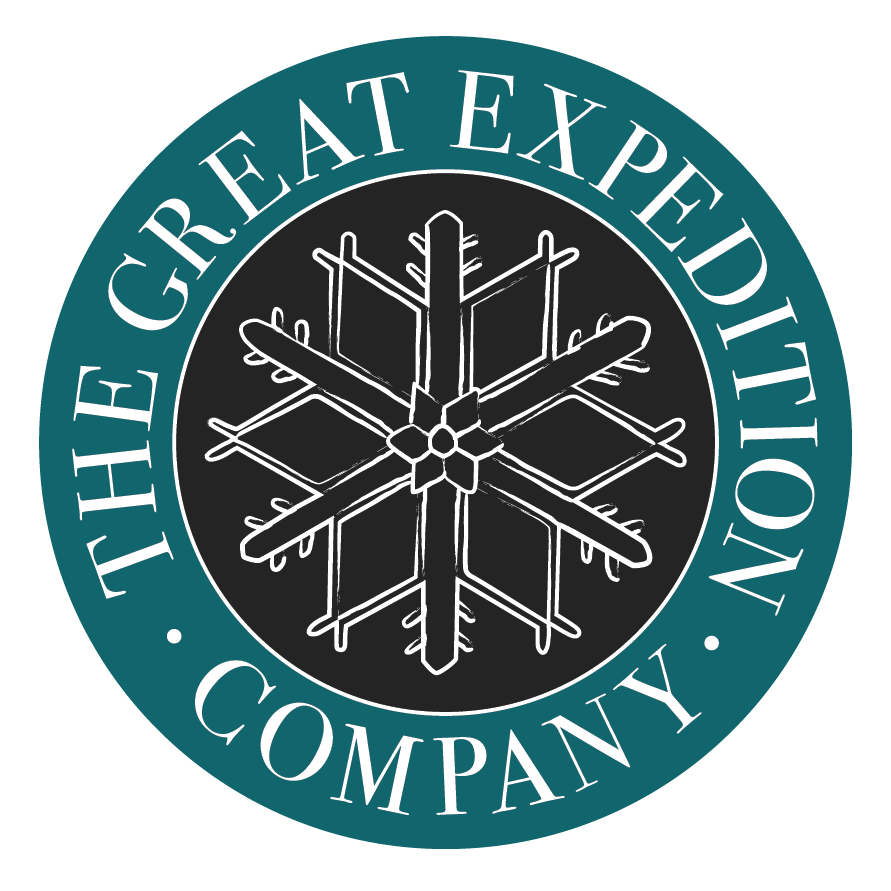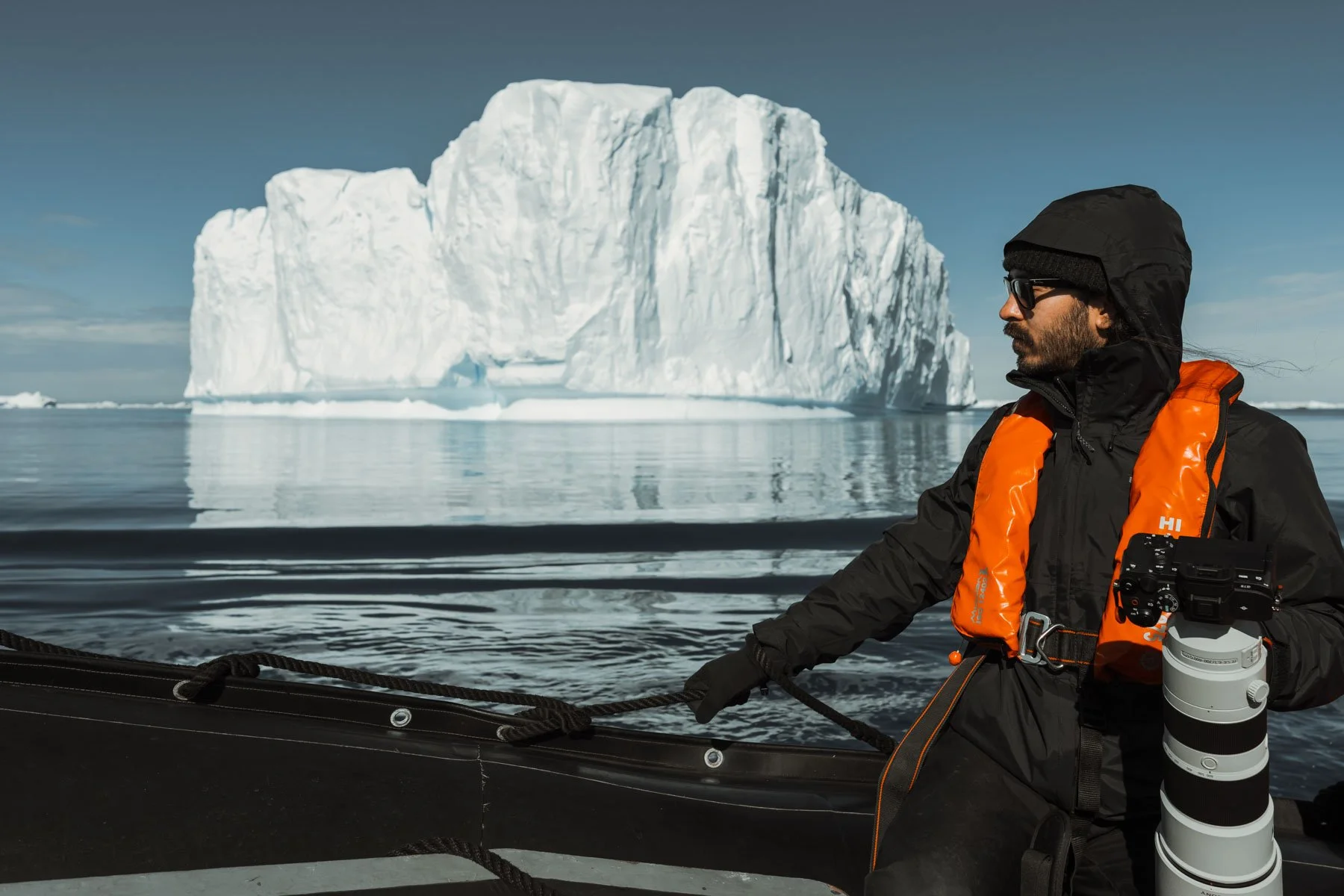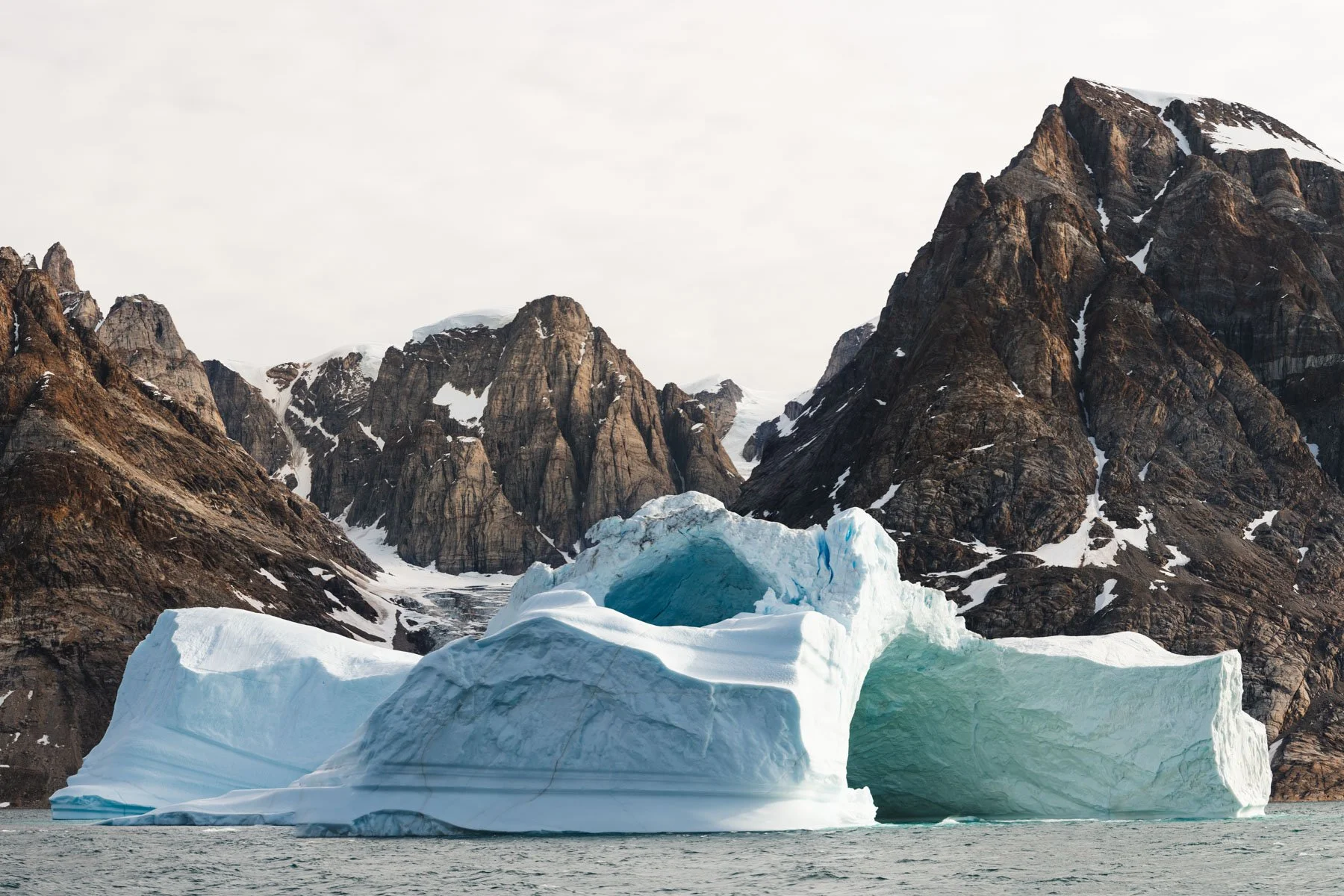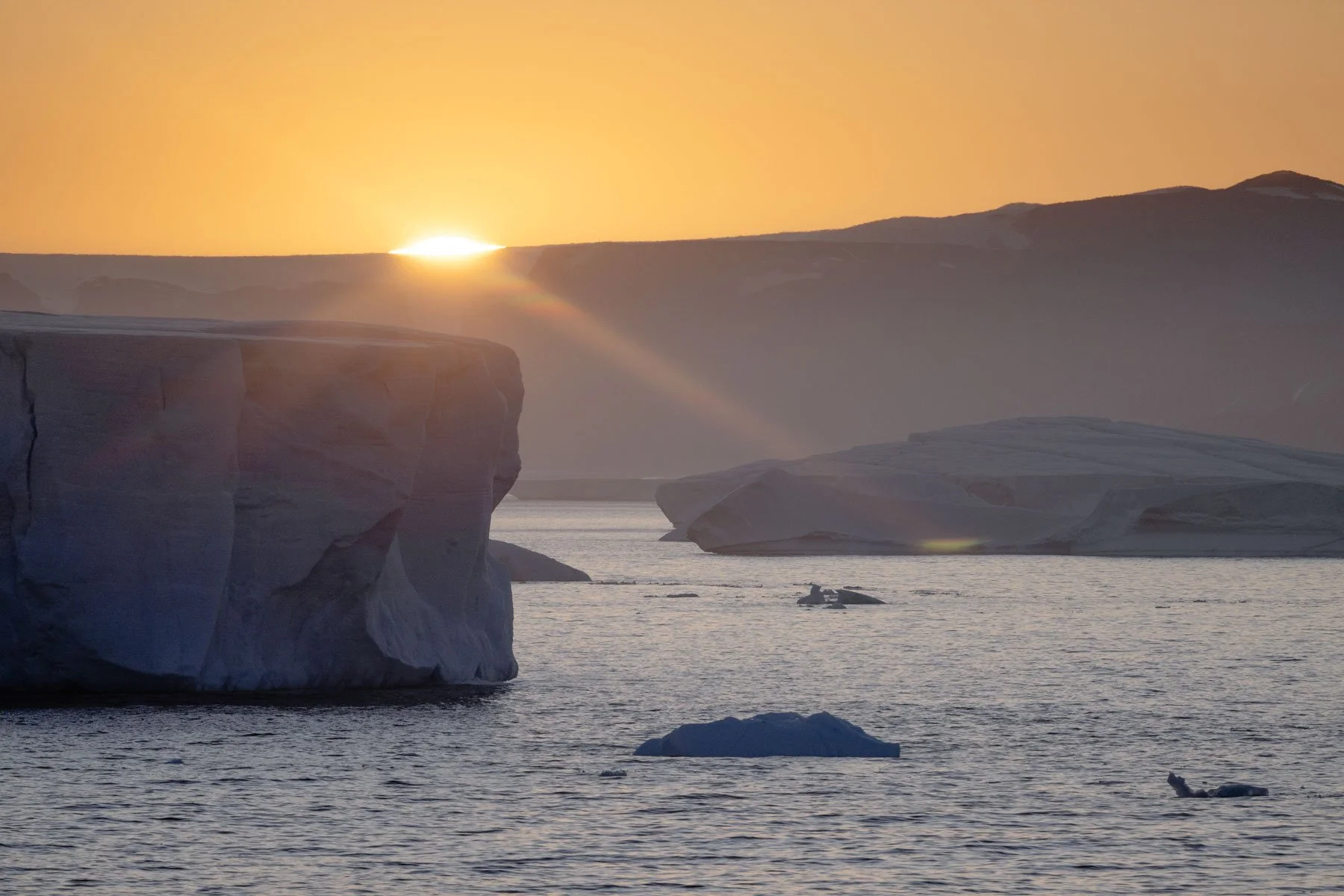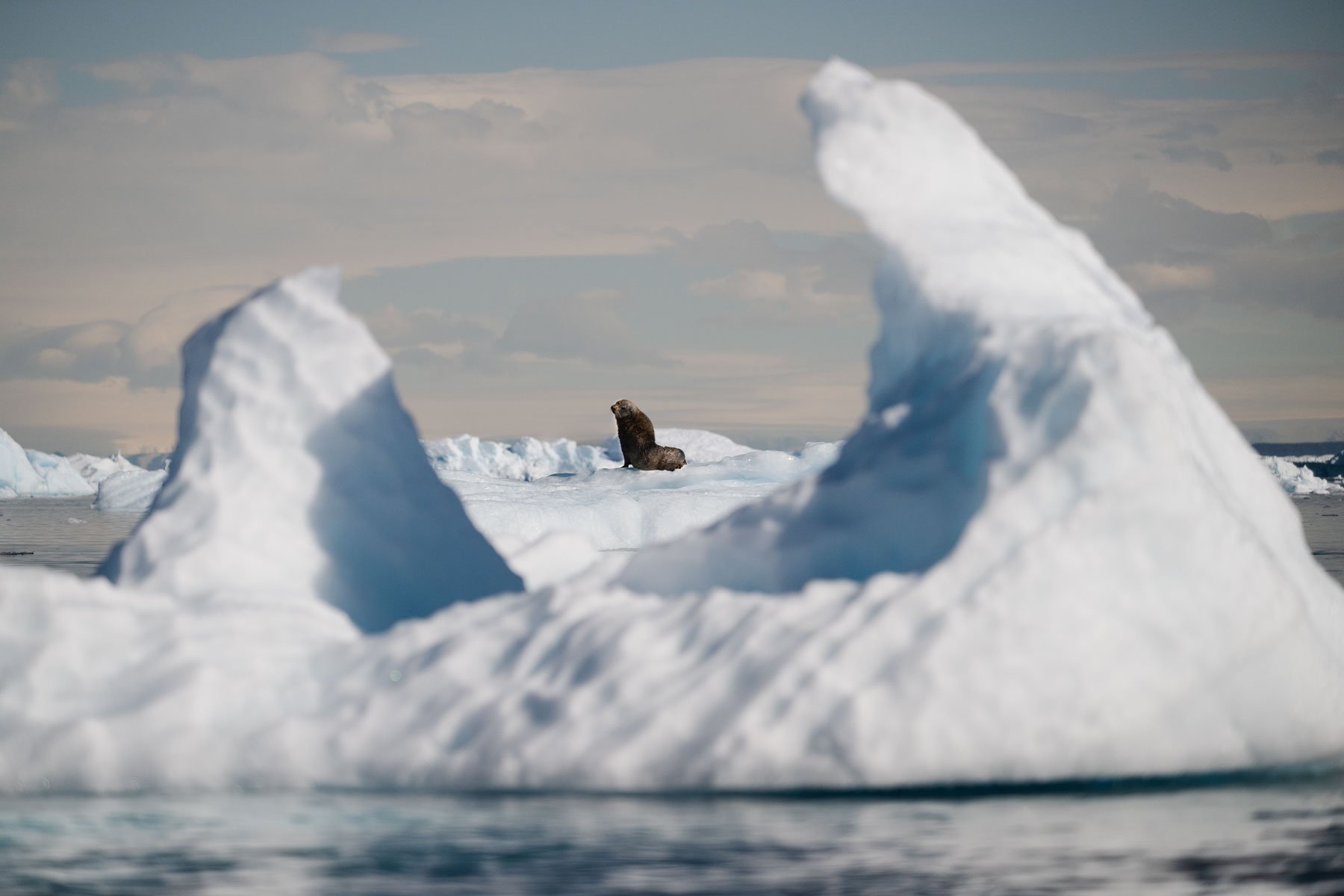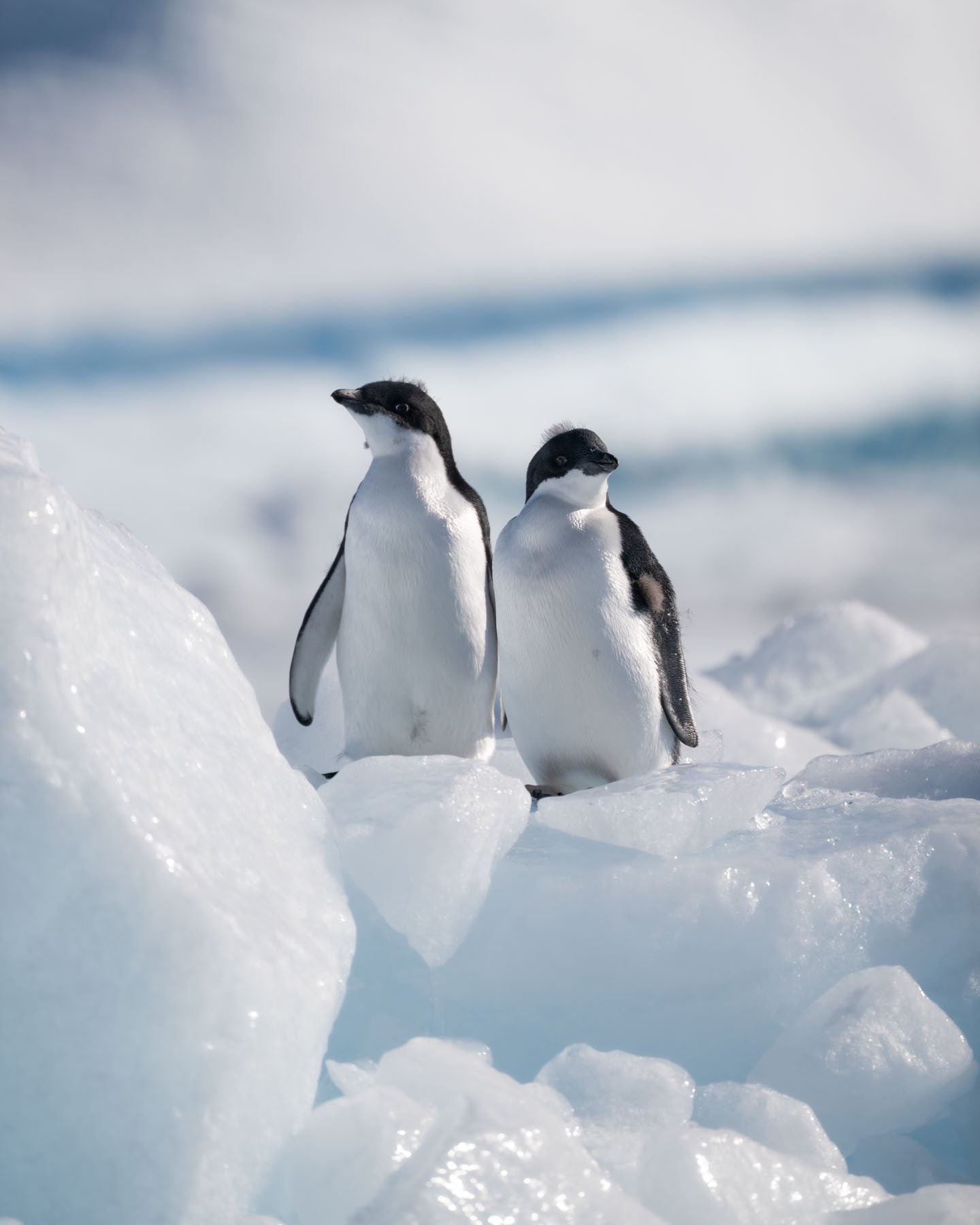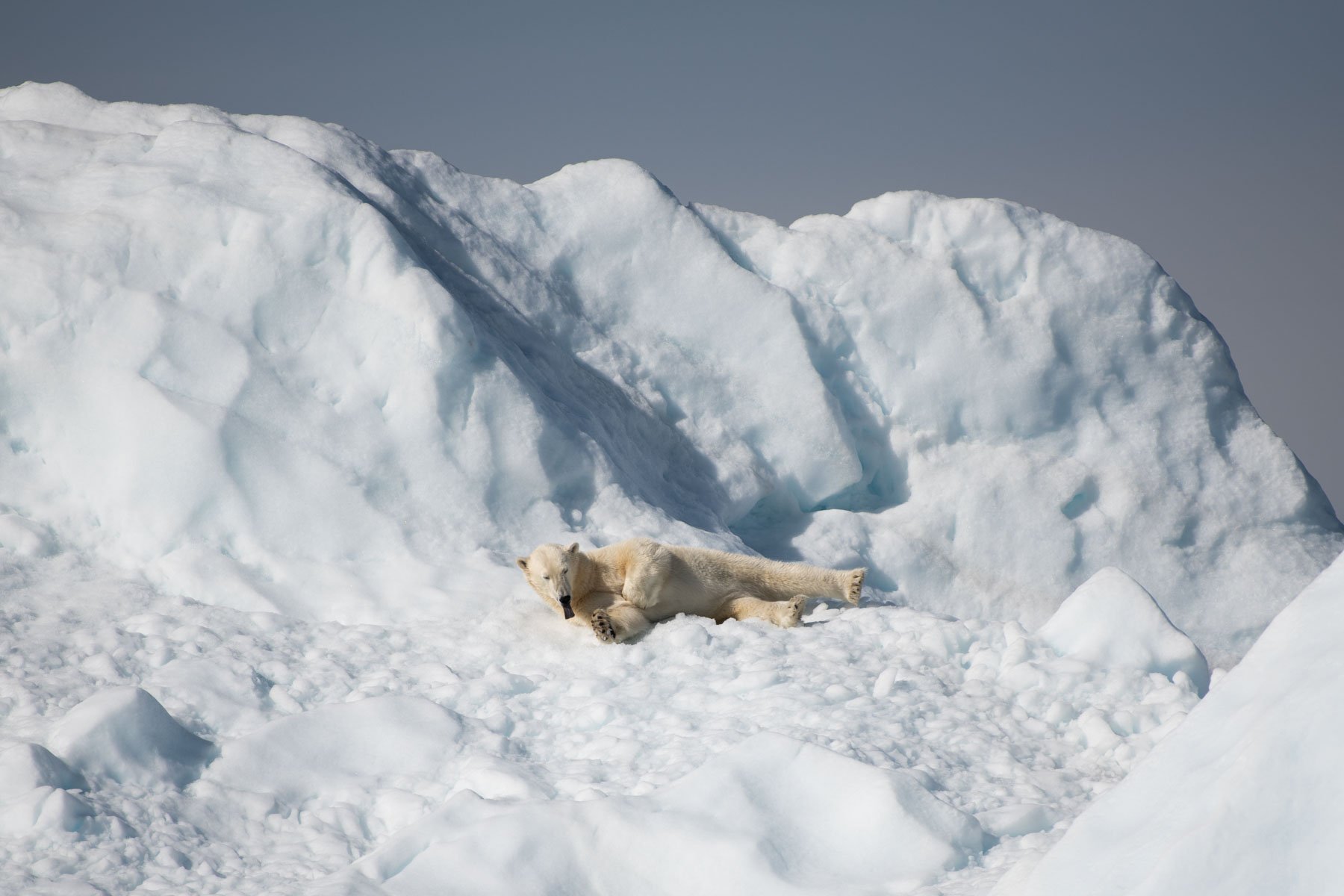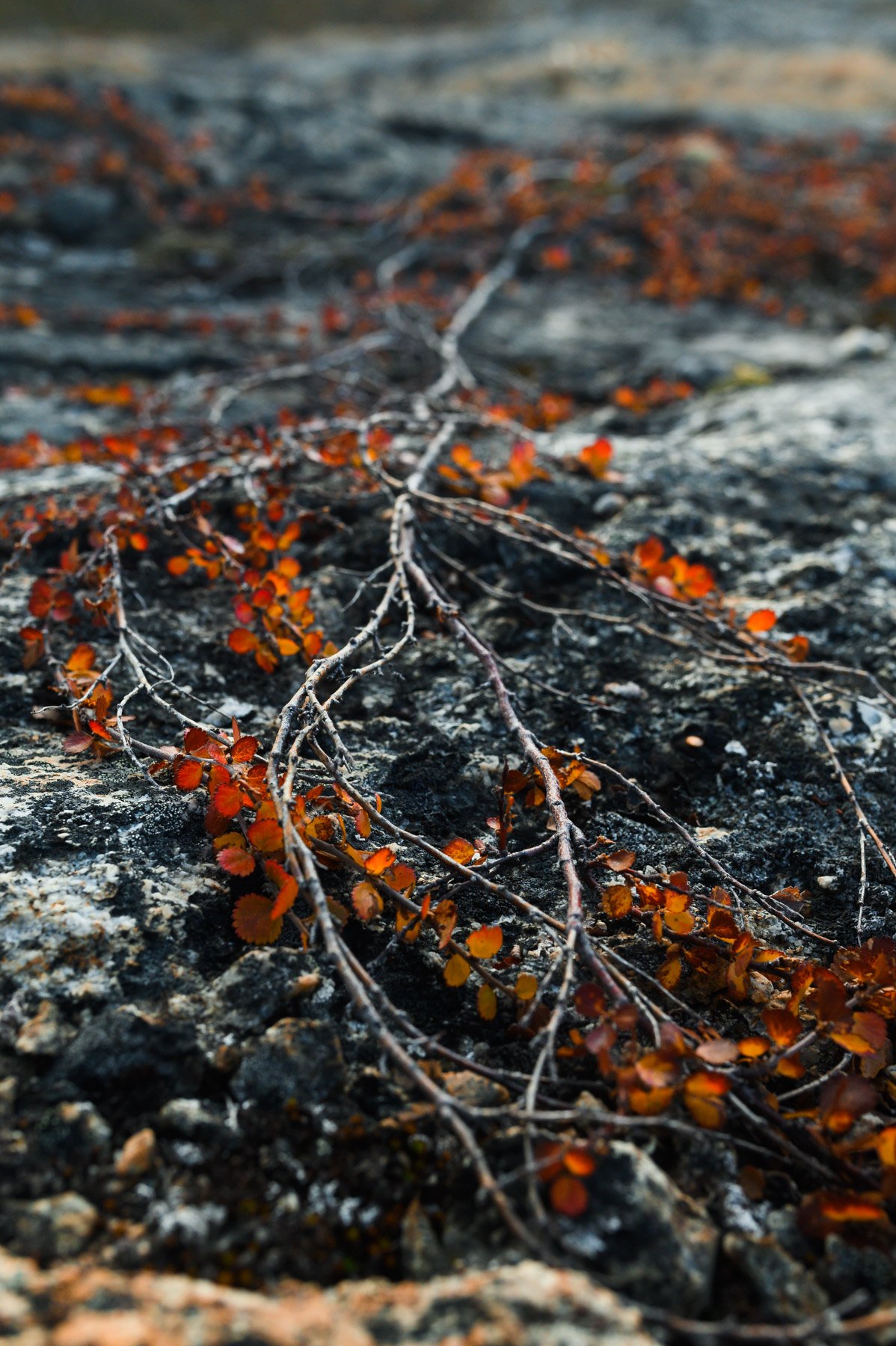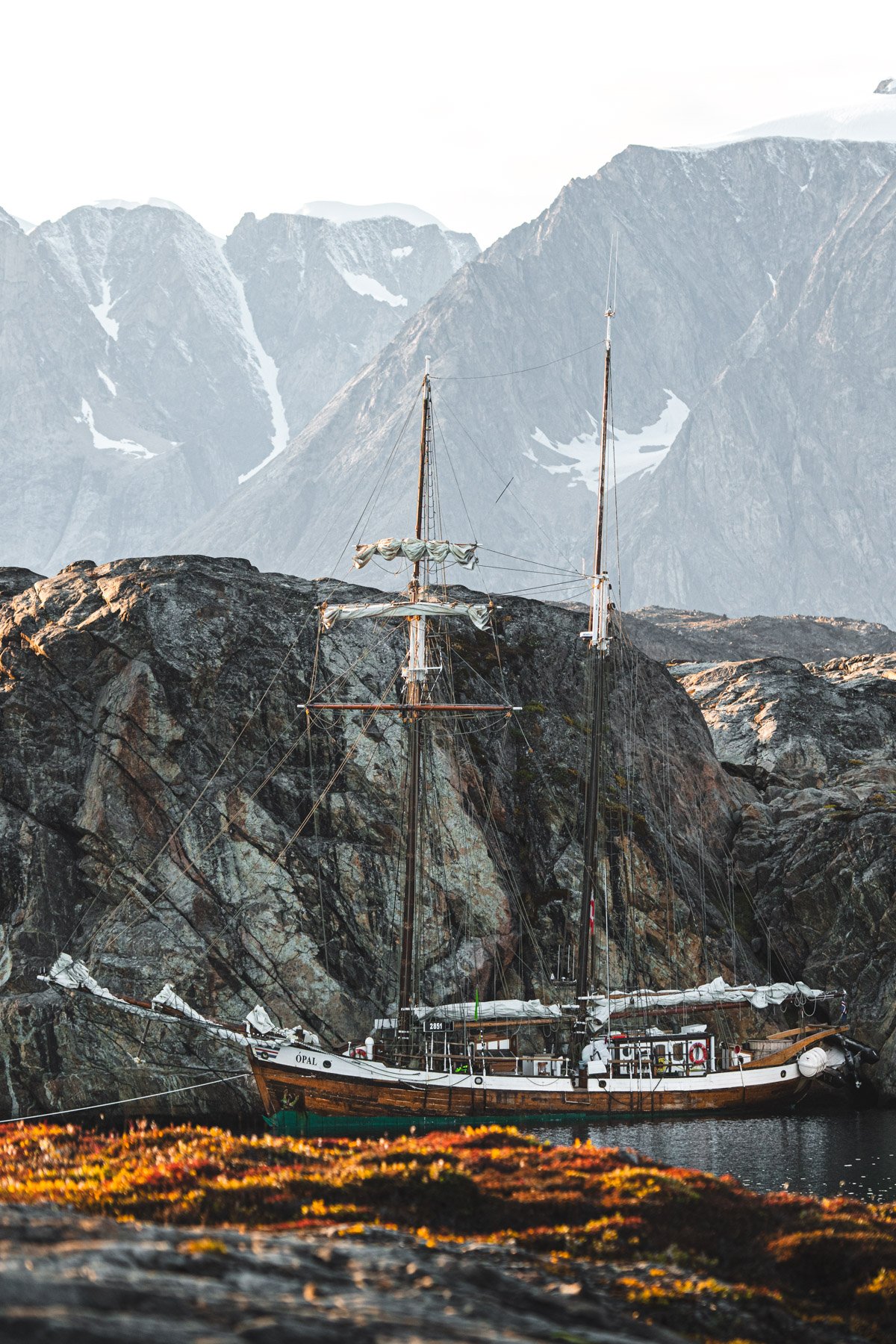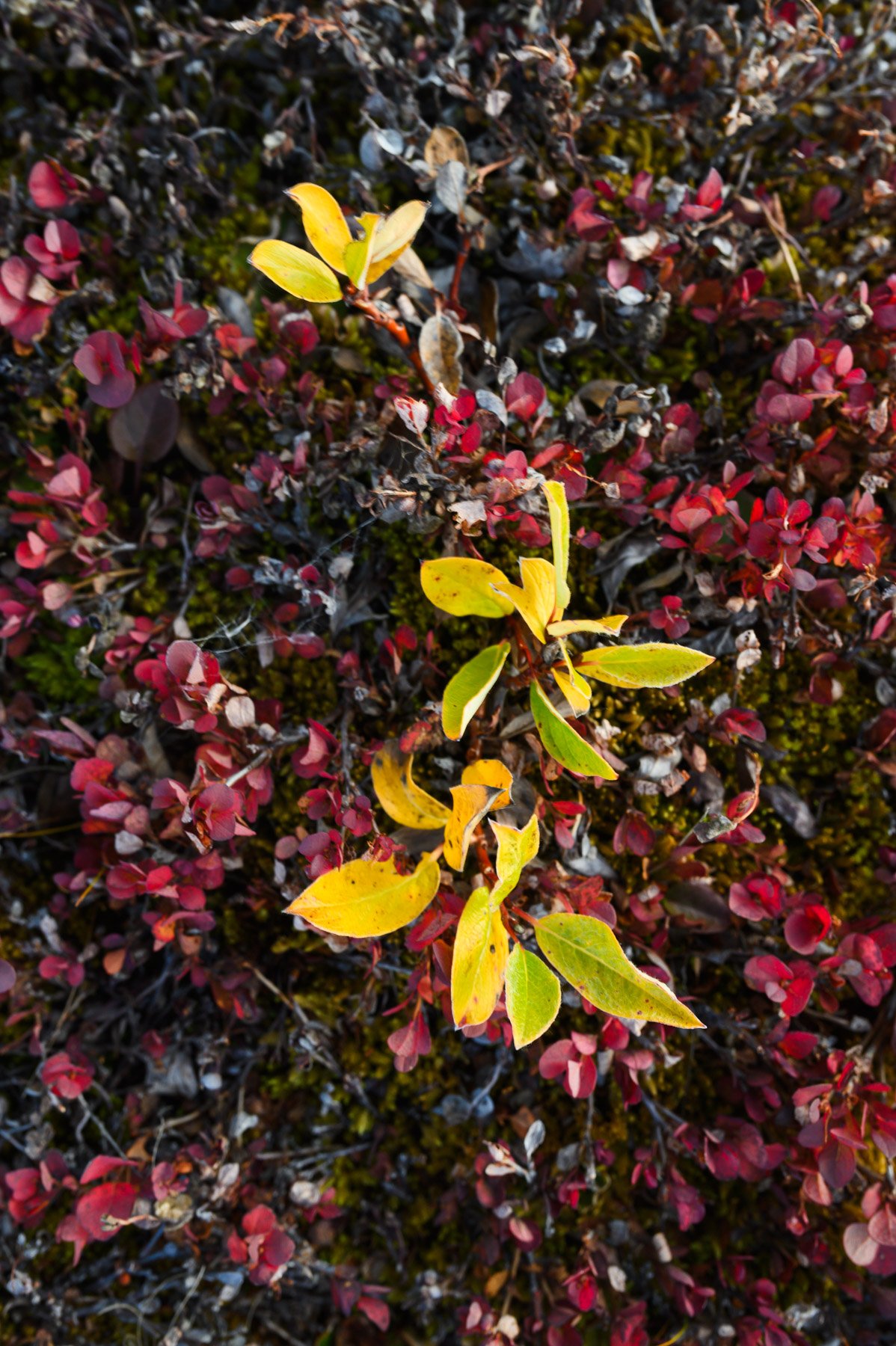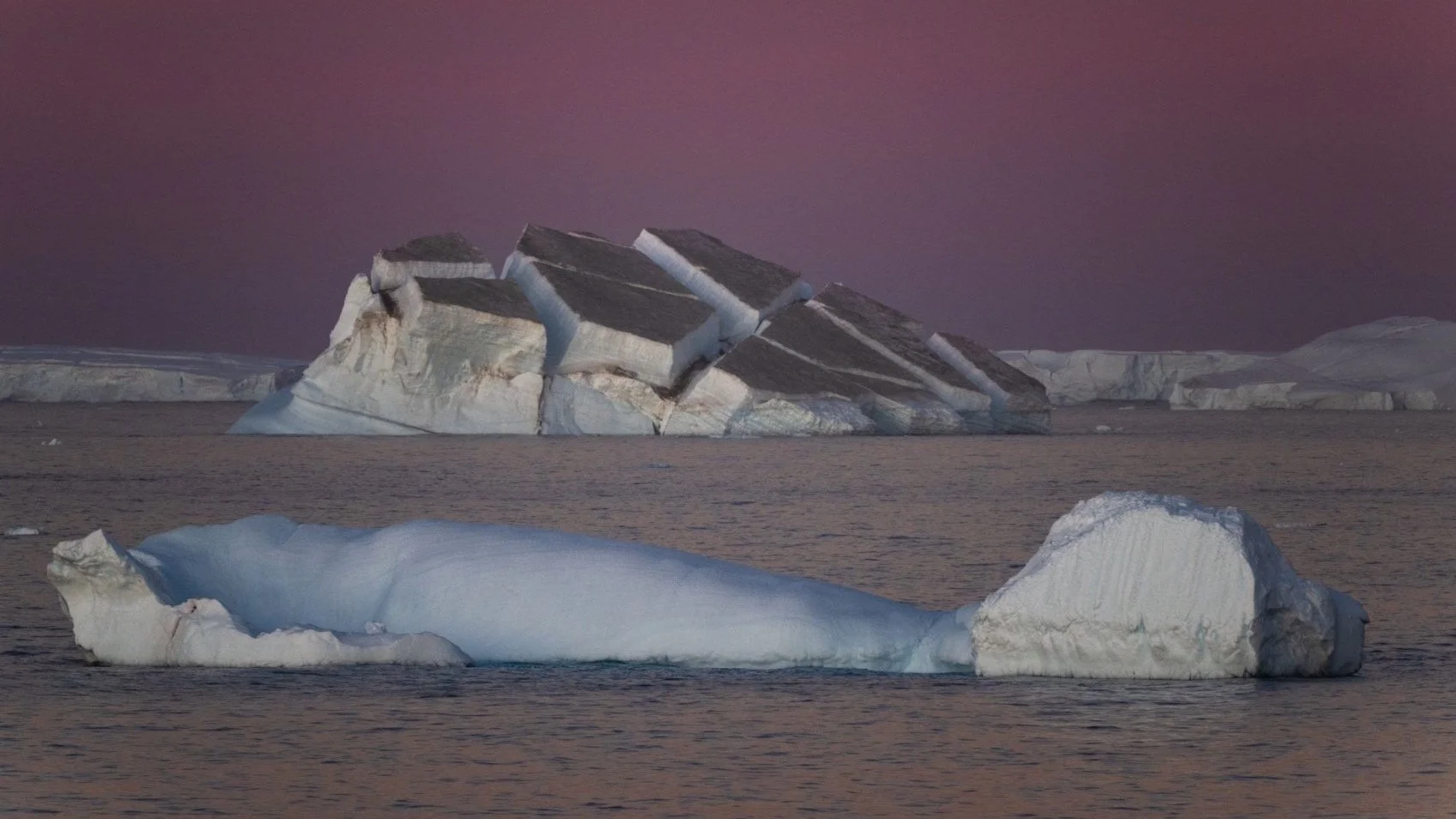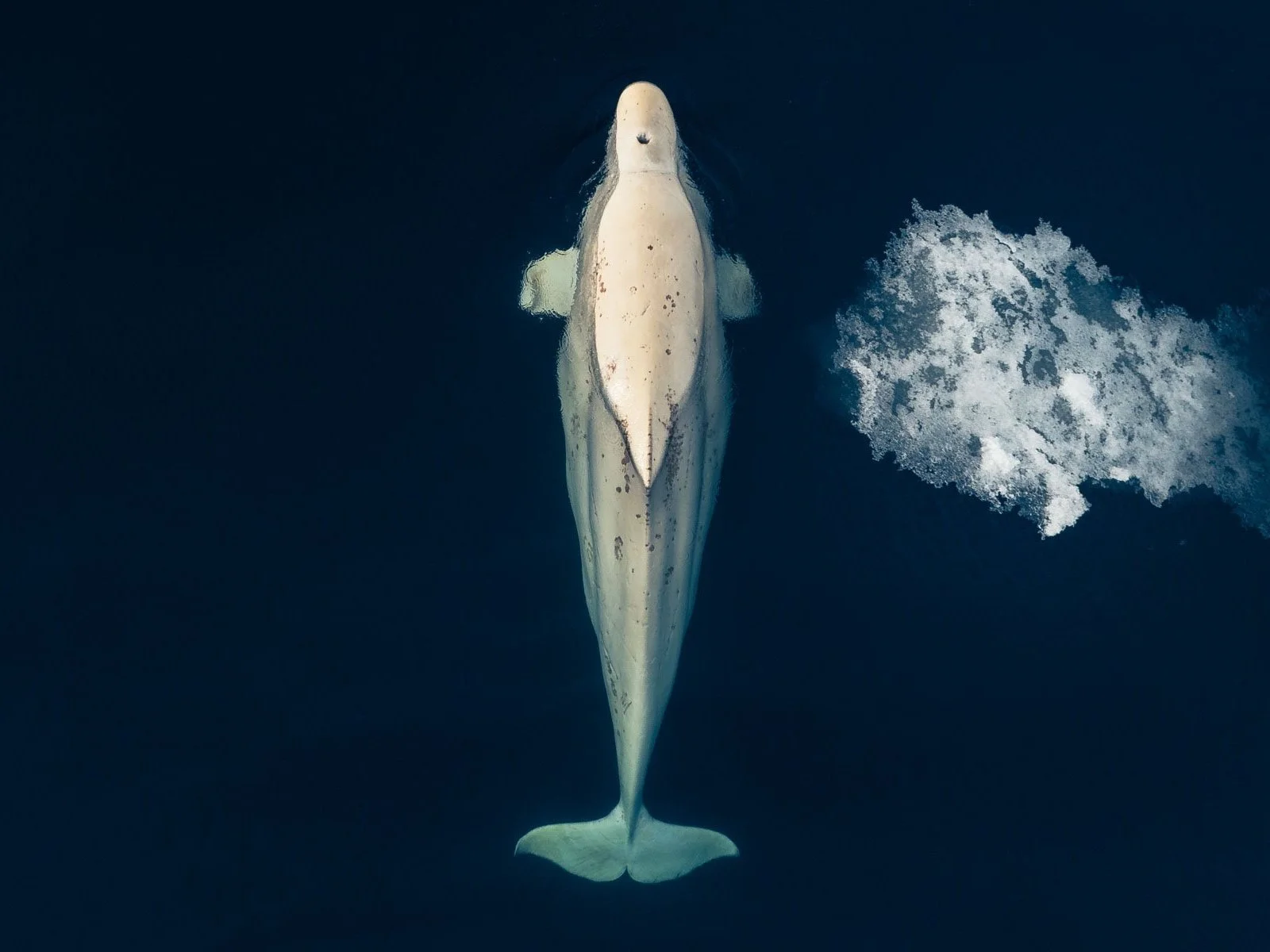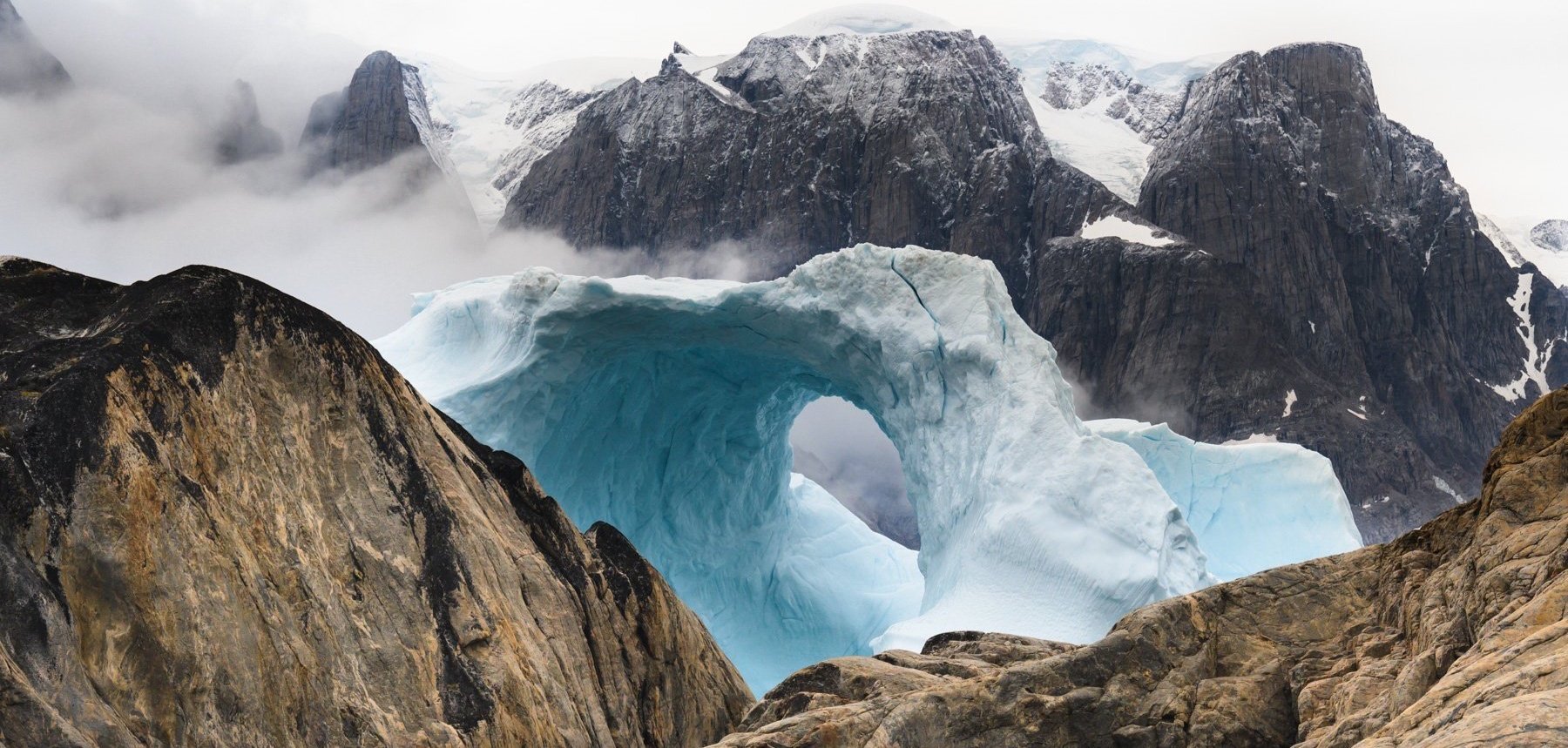Arctic vs Antarctic
Welcome to The Great Expedition Company Blog!
Cruising thrice fields of the Weddell Sea, Antarctica.
On the Great Expedition Blog, we cover and discuss all manner of topics, issues and things to think about when it comes to Greenland, Iceland and the polar regions (Arctic and the Antarctic). We do hope you can benefit from our expedition and travel experience in these areas and use the information found here to make choices about your future travel plans that suit you perfectly.
Introduction to The Arctic vs Antarctic
When it comes to polar exploration, the Arctic and Antarctic stand as contrasting canvases of icy magnificence. Believe it or not, there are several different ways to compare the Arctic vs Antarctic, and we intend to unpack them here. From wildlife to landscapes, to geography and human habitation, each polar realm unfolds in unique ways, but still with plenty in common. Here, we break these differences between the Arctic vs Antarctic as follow
Arctic vs Antarctica? You tell us!
Geographical and geomorphological differences between the Arctic vs Antarctic
Temperature differences between the Arctic vs Antarctic
Wildlife distribution and variation between the Arctic vs Antarctic
Comparing the ice the Arctic vs Antarctic
Human footprints between between the Arctic vs Antarctic
Access and Adventure in the Arctic vs Antarctic
Arctic vs Antarctic in one sentence, TLDR
If you’re looking for a TLDR (too long, didn’t read) for our breakdown of the Arctic vs Antarctic, here it is: the Antarctic is (much colder) colder, (much) higher, (much) icier, has no plants and is less diverse in terms of wildlife and has no history of human habitation before the 20th century.
Geographical and Geomorphological differences between The Arctic vs Antarctic Where Polar Worlds Collide
In the Arctic vs Antarctic geographical comparison, it's a tale of positions on the planet. The Arctic, an ocean surrounded by continents, plays host to polar bears and the mesmerising Northern Lights. Meanwhile, the Antarctic, a continent surrounded by the Southern Lights (aurora Australis), penguins, colossal ice shelves and tabular icebergs, the largest in the world.
The geomorphological differences between The Arctic vs Antarctic are considerable.
Sunset over the Weddell Sea, Antarctica
It is often not readily appreciated that while the Arctic and Antarctic both ‘start’ at sea level, the Antarctic climbs to incredible heights, where air is thin indeed.
The Antarctic rises precipitously, from sea levels where the glaciers Cale off, to the great ice Ronne, Ross and Larsen ice shelves which are hundreds of feet higher, over the Transantarctic mountains and up to the polar plateau, with the geographical South Pole itself being 1235km from the closest coastline and is situated high on the polar plateau (height 2800 m). Much of that is ice. The thickest and largest ice sheet on earth.
The North Pole, the heart of the Arctic, lies barely a foot above sea level, itself surrounded by hundreds of miles of such ice, it is also high unstable and also travelling. There are of course, incredible peaks in the Arctic, but none forma continuous range as do the Transantarctic mountain range, and the tallest peak in Greenland, Mt Gunnbjorn lies at 3,694m (12,119 ft), and is the tallest peak in the Arctic Circle. The tallest peak in Antarctica is Mt Vinson, which lies at 4,892m (16,050 ft). This would make Mount Vinson the tallest peak in the Antarctic Circle too.
Temperatures differences between Arctic vs Antarctic: which is colder?
Both regions boast bone-chilling temperatures, but the Arctic tends to be much more mild than the Antarctic, with winter temperatures hovering around -40°F/-40°C (-40 is the same for both Farenheit and Celcius!). Although that is very cold by any measure, it is positively warm compared to Antarctic desolation, where temperatures have been recorded to plummet to a staggering -128.6°F, the coldest temperature ever recorded on the Planet, at the Vostok research station in the 1980s. The polar plateau where the geographical South Pole lies is a more or less constant -25°C. Even still, many Antarctic expedition have recorded considerable temperature variaitons which are reflected in ‘the going” of the skis and the snow under them. Add some wind chill to this, and you will have the harshest and most inhospitable conditions on earth, turning skin frostbitten in a few seconds.
Wildlife distribution and variation between the Arctic vs Antarctic
Here again, there are differences and similarities. In the Arctic vs Antarctic wildlife, it's a toss-up of charismatic species of megafauna. In the Arctic, you can see:
Polar Bear (largest terrestrial land predator)
Arctic Fox
Muskox
Reindeer
Various Seal Species
Whales & dolphins (many of which migrate to The Antarctic)
Raptors such as white-tailed sea eagles, owls and falcons
Migratory birds (Arctic Terns, Kittiwakes, loons and buntings to name a few.
In Antarctica, we have overlapping species of megafauna, but also entirely different ones.
In Antarctic, you can see:
Penguins (Gentoo, Adelie, Chinstrap, Emperor)
Seals
Leopard seal
Crabeater seal
Weddell Seal
Ross Seal
Antarctic Fur Seal
Whales and dolphins
8 species of Albatross in the Antarctic and sub-Antarctic
Many other bird species such as Skuas, Petrels and the Antarctic Tern, to name a few.
Plant (photosynthetic) life distribution and variation between Arctic vs antarctic
Despite being terrestrially very inhospitable, when it comes to the Arctic vs Antarctic, the Arctic is a veritable rainforest compared to the Antarctic. The Arctic plays host to no less than 1,700 species in the Arctic and the Arctic Tundra. Some of the more common species of plants found in the arctic
In the Antarctic, there are no trees or shrubs of any kind, and only two species of flowering plants: Antarctic hair grass (Deschampsia antarctica) and Antarctic pearlwort (Colobanthus quitensis).
But there are 300 species of lichens in Antarctica, which are not plants! Lichens do not produce seeds and are a symbiosis of two organisms: fungus and photosynthetic algae.
Comparing the Ice in The Arctic vs Antarctic: The Grandeur of Frozen Landscapes
Is ice ever really just ice? All ice is of course frozen water, thanks captain obvious, but somehow despite this bare bones fact, the outcomes of ice in Arctic vs Antarctic end up being very, very different.
When it comes to ice, both regions are frozen wonders, but their icy compositions differ. The Arctic showcases vast sea ice, floating atop its polar ocean.
The outlet tongues giving off these icebergs in the Arctic are smaller than in the Antarctic, and perhaps because of this the shapes and structures of the ice are very different. Ice in the Arctic takes on incredible, fantastical and enormous forms, spikes and arches, while Antarctica presents colossal ice shelves, one of the key phenomena are the tabular icebergs that break off of the great ice shalves: those that can only be formed form the mass of a veritable continent of ice pressing outwards and downwards onto the oceans below.
Arctic vs Antarctic: Size Matters
Here, at the Antarctic wins, hands down. The largest iceberg in the world at the of recent times was A23a, which 400m/1312 ft high and 4,000 square km (1,544 sq miles). That is about 3 times the size of New York City. There are no ice sheets in the Arctic with enough ocean-facing ice that are capable of creating icebergs that enourmous.
Contrasting Human Footprint between Arctic vs Antarctic: Indigenous Wisdom vs. Scientific Endeavor
In the Arctic vs Antarctic comparison, the human story unfolds very differently. Indigenous communities have long inhabited the Arctic, blending tradition with the eternal challenges of the region for thousands of years, and in different waves of migrations, too. Migrations occurred in an easterly direction from Canada towards Greenland. The great waves of migration to Greenland were called Independence I from 2500 -1750 BC, Saqqaq culture from 2400BC through to 400 BC, Independence II from 800BC to 0AD, the Dorset 2 from 8th-9th Century AD and finally the Thule people, the last wave of migration starting around 1200 AD of whom it is widely thought now according to the best available evidence the modern Inuit are the modern descendants.
IIttoqqortoormiit, the place with the big houses, East Greenland.
Antarctica, by contrast, has no prior evidence of human habitation. Antarctica is devoid of native and subisisting human populations, and serves instead as base canvas for scientific exploration, with many countries (20 to be precise) now operating Antartctic research stations, 70 in total, although the USA McMurdo station is by far the largest, with a summer population of 1200 people and a winter population of about 200.
The discovery of Antarctica in the 8th century marked a heroic era of exploration as intrepid adventurers sought to unveil the mysteries of the icy continent.
The first crossing of the Antarctic Circle took place under Captain Cook’s second voyage, 1773. Fabian Gottlieb von Bellingshausen was the first person to sight Antarctica The 19th-century expeditions, notably those led by James Clark Ross and his discovery of the Ross Ice Shelf in the mid-1800s, contributed significant geographical knowledge. The first person to sight Antarctica was Nathaniel Palmer, on 17 November 1820, and the first landing was just about a year later when English-born American, Captain John David, another sealer, set foot on the ice. Many decades later in 1898-99, The Belgica expedition led by Adrien de Gerlache became the first vessel to overwinter in the Antarctic after becoming trapped in ice.
Access and Adventure: From Northern Lights to Antarctic Expeditions
Accessibility defines the Arctic's appeal, drawing travelers to witness the Northern Lights, navigate icy fjords, and encounter polar bears. Also, there are million os people that live in the Arctic, making the Arctic considerably halted. Antarctica, with its remoteness and inhospitable conditions, becomes the ultimate challenge for adventurers seeking the epitome of polar exploration precisely because, aside from a few scientists, it is uninhabitable and with some of the most strict environmental regulations in the world preventing any form of traditional human settlement.
Northern Lights over Schooner Opal, Northeast Greenland
The Arctic vs Antarctic: summarising Polar Extremes
Whichever way you look at it, the Arctic vs Antarctic make up the true extremes of our planet. The Arctic vs Antarctic saga compares the imagination with each with its frozen allure. Whether you're yearning fro see a polar bear in the wild or a waddle around with thousands of penguins, the Arctic and Antarctic stand as distinct polar realms, beckoning the intrepid traveler to explore the ends of the Earth on Great Expeditions conceived but as yet unrealised.
In general, with the Arctic being the easiest of the two polar regions to access, our top tip would be to start by visiting the Arctic, and then form there you would be well positioned to see for yourself just how the Arctic vs Antarctic could play out. The Artic will be a fantastic onvas against which to compare your future antarctic experience.
We wish you a Great Expedition, in whatever you decide to do or go.
The Circumnavigation of Spitsbergen
The largest island on the Svalbard Archipelago - 78/80ºN
July 28-Aug 08
